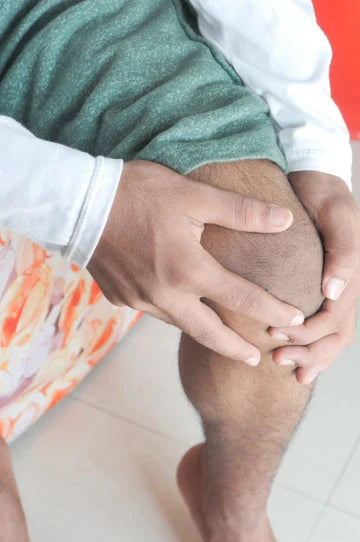




What are you looking for?

Treatment for joint pain and stiffness—easy daily habits and gentle supplements that may support mobility, safely.
Joint aches that won’t go away can slow everything—work, walks, even sleep. The right treatment for joint pain and stiffness is usually a mix of daily movement, simple home care, and, where suitable, gentle supplements. This guide keeps it practical and safe.
Quick take: Move a little, often. Warm the joint, strengthen nearby muscles, sleep well, and add evidence-aware natural support if needed.
Overuse or long sitting tightens tissues around the joint.
Weak muscles stop supporting joints; load shifts to ligaments and cartilage.
Old injuries or posture issues create uneven strain.
Inflammation—from stress, poor sleep, or a sensitive gut—can make joints feel stiff and puffy.
Degenerative changes with age reduce joint fluid and cushioning.

Short rest helps after a strain, but total rest stiffens joints. Prefer active rest: easy range-of-motion drills, gentle walking, and light stretches. If pain rises sharply or you see swelling/redness, pause and use cold/warmth as needed.
Heat in the morning or before activity relaxes tight muscles and improves blood flow.
Ice after a flare or a long day can calm irritation.
Rule: Use the one that leaves you feeling easier within 10–15 minutes.
Strengthen the muscles around the joint.
For knees: mini-squats to a chair, straight-leg raises, calf raises.
For shoulders: wall slides and light band rows.
Keep reps comfortable; progress slightly each week.
Yes. Break long sitting with 2–3-minute movement snacks each hour. Sleep 7–8 hours. Hydrate and eat balanced meals. A steady routine lowers background inflammation and helps the body repair.
Always discuss supplements with a qualified professional, especially if you take medicines, are pregnant, or have a health condition.
Tip: Introduce one supplement at a time. Track changes for 3–4 weeks before adding another.
Morning (10–15 minutes)
Mid-day
Evening
Weekly add-ons
A clinician can check for injuries, arthritis types, or other causes, and guide medicines, therapy, and tests if needed.
Amiy formulas are doctor-formulated and 100% natural. Our approach focuses on Bio-Neuromodulation™ (supporting calm nerve signaling) and Complex Plant Elixir™ (synergistic botanicals working together).
Muscle Mercy: Crafted to support recovery and everyday comfort; useful after long hours or workouts.
Gut Reset: A calmer gut often means calmer joints; good for those with bloating or food sensitivity.
Related reads:
Best Skincare Products for Acne: Simple, Safe Picks | Amiy Naturals
treatment for stress incontinence in females: simple, natural steps | Amiy Naturals
Medical disclaimer: This content is for education only and is not a substitute for professional medical advice. Please consult a qualified healthcare provider for personal care.

A1: Gentle movement, short heat or ice sessions, and basic strengthening. Start slow, track pain (aim ≤3/10), and build weekly.
A2: Most need consistent use for several weeks. Introduce one at a time and notice changes in comfort, stiffness, and activity levels.
A3: If inflammation flares, try turmeric first. If the joint feels weak or “creaky,” collagen can be useful. Many people use both, spaced in the day.
A4: Yes, if pain stays mild and improves as you warm up. Use supportive footwear, smooth surfaces, and short distances at first.
A5: After injury, when swelling or locking occurs, or if pain persists beyond 2–3 weeks despite steady home care.
A6: Yes—ALA sources like flaxseed and chia are plant-based. Some people also consider algae-based DHA/EPA.
If your day demands movement but pain holds you back, consider adding Muscle Mercy to your routine. It’s designed to gently support recovery and everyday comfort, especially when paired with smart mobility and sleep.
If digestion often feels off—and your joints flare after certain foods—Gut Reset may help support a calmer gut, which can, in turn, support calmer joints. Start low, go slow, and keep a simple progress log.